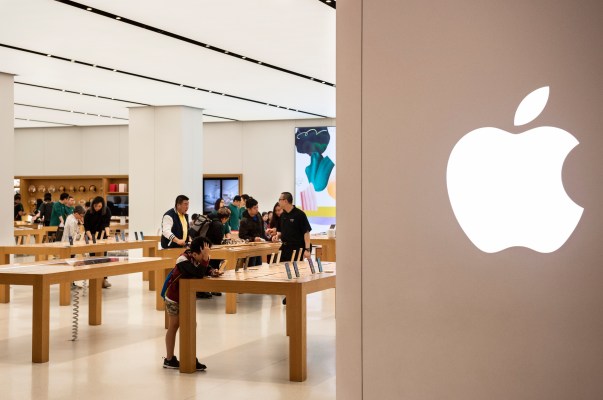Are everyday motorists better equipped to deal with a constant torrent of information than professional army pilots? Probably not, but drivers are bombarded with amounts of information that can rival that of drivers these days, which can lead to accidents.
In the late 1980s, the US military turned to outside experts to study how pilots of Apache attack helicopters responded to the deluge of information beamed into the cockpit on digital screens and analog displays. Verdict: not good.
The cognitive overload caused by all this information degraded performance and increased the risk of crashes, the researchers determined.
Pilots were forced to do too many things at once, with too many bells and whistles demanding their attention. Over the next decade, the Army overhauled its Apache fleet, redesigning cockpits to help operators stay focused.
Cognitive psychologist David Strayer was among those called in to help the Army solve its Apache problem.
Since then, he’s seen civilian cars and trucks fill up even more with the same kinds of digital interfaces that trained drivers with sharp reflexes found so overwhelming — touchscreens, interactive maps, nested menus, not to mention the ubiquitous smartphones. .
In his lab at the University of Utah, he documents the deadly consequences.
“We’re instrumenting the car in a way that overloads the driver much like we overload helicopter pilots,” said Strayer, director of the university’s Distracted Driving Prevention Center.
“Everything we know about overloaded drivers we can apply to motor vehicles,” Strayer said. However, rather than enforcing it, smartphone and car makers have largely ignored the research, constantly adding popular but deadly diversions. “They set up a distraction candy store. And we kill people.”
Of course, new automotive technology also includes innovative safety features such as lane departure warning and blind spot detection. Yet despite these and other collision avoidance systems, the death toll on highways continues to rise.
After decades of declining death rates, American roads have become markedly more dangerous in recent years. In 2021, motor vehicle accidents killed nearly 43,000 people. That’s about 33,000 in 2012 and a 16-year high.
The theories cover a wide range, but no one in the safety field doubts that distracted driving is a key ingredient.
Reported deaths from distracted driving have remained stable over the past 10 years, at 3,000 to 4,000 per year. But there’s good reason to consider these numbers a major undercount, as they’re based on people admitting they were distracted, or a police officer or someone else who saw a driver. with a phone in hand before an accident.
“It’s against people’s interests to say, ‘I was on the phone’ or ‘I was using the infotainment system,’ after an accident, ‘because there can be serious consequences,’ said Cathy Chase, who runs Advocates for Highway. & Automotive Safety.
“I don’t think we have an accurate picture of what’s happening on the roads,” she said.
Other measures point to a much higher toll. In early 2020, the National Safety Council said mobile phones were involved in more than a quarter of crashes. A survey by Nationwide Insurance shows that its agents believe that 50% of all accidents are related to distracted driving. And security experts say the problem has only gotten worse since the pandemic began.
State Farm released survey statistics in April showing more than half of respondents said they read or text “always” or “often” while driving, 43% said they always or often watch videos on their mobile phone while driving, and more than a third said they always or often drove while video chatting.
How do the companies behind all those distracting screens and apps — automakers and smartphone makers — view their responsibility for the problem and their role in solving it?
It’s hard to say. The Times asked the five best-selling automakers in the United States – General Motors, Ford, Toyota, Stellantis and Honda – to provide a framework to talk about what they are doing to help prevent distracted driving. All refused, offering instead to make written public relations material available. Apple and Samsung, the two major smartphone makers, also declined service requests.
When companies talk about distracted driving, they tend to frame it as a cell phone issue. Their solution: Integrate the same features and more into dashboard interfaces and voice recognition systems.
Apple executive Emily Schubert, in a flashy Internet video presentation in June, announced major new features for the company’s CarPlay infotainment system. Apple declined to make Schubert or any other executive available for interview, but in an email a spokesperson called CarPlay “a smarter, safer way to use iPhone in the car.” What makes it safer and to what extent? No details were provided.
The company noted that it provides Driving Focus mode on its phones, which, if activated by the customer, keeps the phone silent and does not allow notifications to come through. A Nationwide Insurance poll showed that 70% of respondents had never used such a feature.
A Honda spokesperson said via email that “the biggest thing we can do to reduce distraction is to reduce the likelihood of a driver looking at their cell phone while driving” with more emphasis on infotainment systems, through which the company makes “an attempt to minimize distractions while satisfying driver ease of use and access to desired information.”
Honda offered few details and declined an interview on the subject. The company said it was working with researchers at Ohio State University on the infotainment interface. The professors involved also declined to provide details, saying their work for Honda was exclusive.
One problem with relying on infotainment systems to improve safety is that they don’t work very well. “Infotainment systems remain the most problematic area” for new car customers, wrote automotive market research firm JD Power in its latest New Car Quality Report. Customers complain of frequent issues with connectivity, Bluetooth syncing, touchscreens, and built-in voice recognition.
The ability to control features like climate control and music playlists via voice commands theoretically improves safety by allowing drivers to keep their eyes on the road. But with the technology still under development, scientists are learning that it can be just as dangerous as playing with a smartphone.
In a 2019 article, Strayer’s team reported that performing tasks using voice commands took significantly longer than other types of interaction with smartphones and infotainment systems.
In Europe, automakers will soon be required to install monitors to detect driver distraction in order to receive top safety scores. No such measure is publicly contemplated in the United States.
Without major changes in driver behavior and public policy, tens of thousands of people will die each year, with devastating consequences for their families and friends. It’s part of the cost of growing infotainment.




